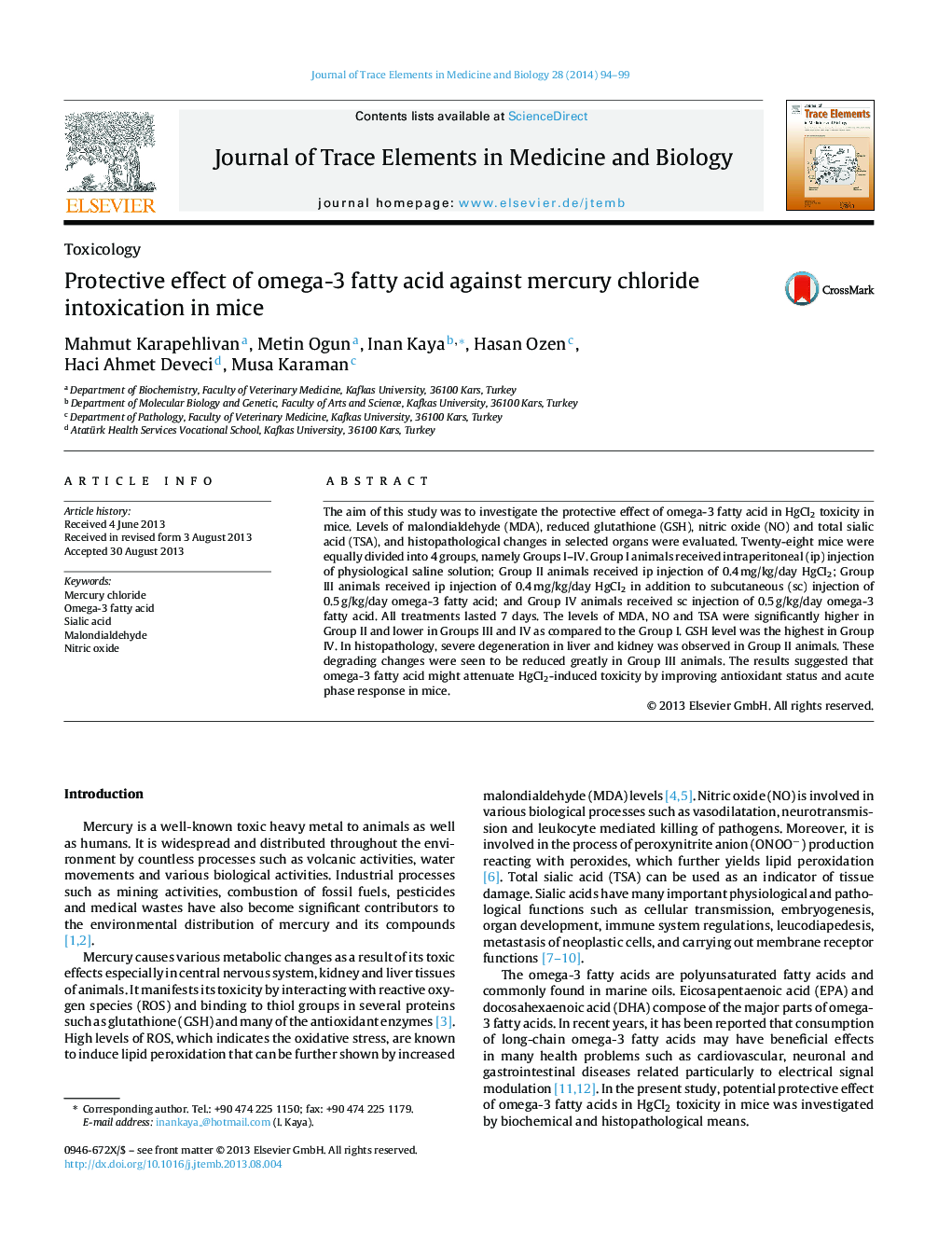| Article ID | Journal | Published Year | Pages | File Type |
|---|---|---|---|---|
| 1226667 | Journal of Trace Elements in Medicine and Biology | 2014 | 6 Pages |
Abstract
The aim of this study was to investigate the protective effect of omega-3 fatty acid in HgCI2 toxicity in mice. Levels of malondialdehyde (MDA), reduced glutathione (GSH), nitric oxide (NO) and total sialic acid (TSA), and histopathological changes in selected organs were evaluated. Twenty-eight mice were equally divided into 4 groups, namely Groups I-IV. Group I animals received intraperitoneal (ip) injection of physiological saline solution; Group II animals received ip injection of 0.4Â mg/kg/day HgCI2; Group III animals received ip injection of 0.4Â mg/kg/day HgCI2 in addition to subcutaneous (sc) injection of 0.5Â g/kg/day omega-3 fatty acid; and Group IV animals received sc injection of 0.5Â g/kg/day omega-3 fatty acid. All treatments lasted 7 days. The levels of MDA, NO and TSA were significantly higher in Group II and lower in Groups III and IV as compared to the Group I. GSH level was the highest in Group IV. In histopathology, severe degeneration in liver and kidney was observed in Group II animals. These degrading changes were seen to be reduced greatly in Group III animals. The results suggested that omega-3 fatty acid might attenuate HgCI2-induced toxicity by improving antioxidant status and acute phase response in mice.
Related Topics
Physical Sciences and Engineering
Chemistry
Analytical Chemistry
Authors
Mahmut Karapehlivan, Metin Ogun, Inan Kaya, Hasan Ozen, Haci Ahmet Deveci, Musa Karaman,
